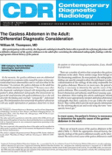
Contemporary Diagnostic Radiology
Scope & Guideline
Pioneering Research in Contemporary Radiology
Introduction
Aims and Scopes
- Diagnostic Imaging Techniques:
The journal features research on various imaging modalities, including MRI, CT, ultrasound, and PET/CT, emphasizing their application in diagnosing a wide range of diseases. - Interventional Radiology:
There is a significant focus on interventional procedures, exploring the techniques and outcomes of minimally invasive treatments guided by imaging. - Pediatric Radiology:
The journal addresses unique challenges and considerations in imaging children, providing insights into pediatric-specific conditions and diagnostic approaches. - Anatomical and Pathological Correlations:
Research often links imaging findings with anatomical and pathological insights, aiding in the understanding of disease processes. - Emerging Technologies:
Contemporary Diagnostic Radiology is keen on publishing studies related to new imaging technologies and methodologies, including advancements in artificial intelligence and machine learning in radiology.
Trending and Emerging
- Artificial Intelligence in Radiology:
The integration of AI and machine learning in diagnostic imaging is rapidly growing, with studies exploring how these technologies can improve diagnostic accuracy and workflow efficiency. - Imaging in Oncology:
An increasing number of papers focus on imaging techniques for cancer diagnosis and treatment, particularly in relation to personalized medicine and targeted therapies. - Interventional Techniques in Managing Complex Conditions:
There is a rising trend in the exploration of interventional radiology techniques for treating complex conditions, emphasizing the role of imaging in guiding these procedures. - Multimodal Imaging Approaches:
Research is increasingly looking at the benefits of combining different imaging modalities to improve diagnostic capabilities and patient management. - Pediatric Imaging Innovations:
Innovative approaches to pediatric imaging are emerging, focusing on minimizing radiation exposure while maximizing diagnostic efficacy.
Declining or Waning
- Generalized Imaging Reviews:
There has been a noticeable decrease in publications that provide broad overviews of imaging techniques without specific clinical context, as the focus shifts towards more targeted studies. - Non-Specific Case Reports:
The frequency of non-specific case reports has diminished, indicating a trend towards more robust studies that offer significant clinical implications or contribute to evidence-based practice. - Traditional Radiology Practices:
As the field evolves with technological advancements, traditional practices that do not integrate new technologies or methodologies are becoming less common in published research.
Similar Journals
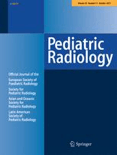
PEDIATRIC RADIOLOGY
Elevating medical imaging in child health.Pediatric Radiology is a leading journal published by Springer that provides a crucial platform for the dissemination of research in the fields of pediatrics, perinatology, and radiology. Since its inception in 1973, the journal has continually contributed to the advancement of medical imaging techniques and their application in diagnosing and treating pediatric conditions. With its impact factor reflecting a Q2 ranking in both Pediatrics and Radiology categories as of 2023, Pediatric Radiology is highly regarded in scholarly circles, aiding researchers, clinicians, and students to stay at the forefront of innovations and findings in the field. Although the journal does not offer open access, it continues to be an essential resource for evidence-based information that enhances clinical practice and improves health outcomes for children globally. The journal's reach is further established through its solid Scopus rankings, indicating its relevance and influence in the global medical community.

Indian Journal of Radiology and Imaging
Elevating Standards in Radiology and ImagingThe Indian Journal of Radiology and Imaging, published by THIEME MEDICAL PUBL INC, is a prominent open-access journal in the field of radiology, nuclear medicine, and imaging. Since its inception in 1984, the journal has provided a platform for researchers, professionals, and students to disseminate innovative research and findings in diagnostic imaging. With a growing impact factor and categorized in the Q3 quartile according to the 2023 rankings, it ranks among the notable journals in its field, although it currently stands at Rank #244 out of 333 within Scopus, reflecting its competitive position in radiology research. The journal, accessible to a global audience since 1999, aims to advance the knowledge and practice in imaging by inviting diverse contributions, including original research articles, reviews, and case reports. Its commitment to open-access publication fosters wider dissemination and collaborative discourse, crucial for the dynamic landscape of medical imaging.

Radiologia Medica
Advancing Imaging Excellence in Radiology.Radiologia Medica, published by Springer-Verlag Italia SRL, is a premier Italian journal dedicated to the field of radiology, nuclear medicine, and imaging. With a rich history dating back to 1947, this journal has consistently provided cutting-edge research and findings, contributing significantly to advancements in medical imaging techniques and practices. As evidenced by its impressive Q1 rankings in both Medicine (Miscellaneous) and Radiology, Nuclear Medicine and Imaging, Radiologia Medica holds a prestigious position within the top tier of medical journals, ranked #11 out of 333 in its category and residing in the 96th percentile according to Scopus metrics. Although it is not currently offered as an Open Access journal, its robust subscription model supports extensive research dissemination. Researchers, professionals, and students alike will find invaluable insights and knowledge critical for advancing their understanding and practice within this dynamic field. Situated in Milan, Italy, Radiologia Medica continues to be an influential platform for the exchange of high-quality research, bridging various disciplines and promoting excellence in radiological science.
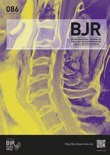
BRITISH JOURNAL OF RADIOLOGY
Shaping the Future of Imaging through Rigorous ResearchBritish Journal of Radiology is a leading peer-reviewed journal published by the British Institute of Radiology, dedicated to advancing the field of radiology, nuclear medicine, and imaging. With a prestigious history dating back to 1945, this journal is at the forefront of disseminating cutting-edge research and innovations that significantly impact clinical practice. Currently enjoying a Q1 ranking in the field of radiology and Q2 in general medicine for 2023, it is recognized for its rigorous standards and high-quality content, ranking #87 out of 333 in Scopus for specialties related to Medicine, Radiology, Nuclear Medicine, and Imaging, placing it in the 74th percentile. Researchers, professionals, and students are encouraged to engage with the latest findings and comprehensive reviews presented within its pages, which contribute not only to academic discourse but also to the evolution of practice in the wider medical community.

SA Journal of Radiology
Elevating Standards: Your Source for Cutting-Edge Radiology ResearchThe SA Journal of Radiology is a prominent open-access journal published by AOSIS, dedicated to advancing knowledge in the fields of Radiology and Ultrasound Technology. Established in 2004, this South African journal provides a platform for researchers, professionals, and students to disseminate valuable findings and share innovative practices in medical imaging. With an ISSN of 1027-202X and an E-ISSN of 2078-6778, the journal has become an important resource for those involved in radiological sciences, despite currently holding a Q4 ranking in both Radiological and Ultrasound Technology and Radiology, Nuclear Medicine and Imaging categories. Covering a converged time span from 2014 to 2024, the journal aims to promote scholarly communication and enhance the accessibility of research, positioning itself as a key player in the global radiological community. In a landscape where open access is increasingly critical, the SA Journal of Radiology is committed to fostering research collaboration and facilitating the exchange of ideas among clinicians and academics alike.

European Radiology Experimental
Fostering Global Collaboration in Radiology InnovationEuropean Radiology Experimental is a premier open-access journal published by Springer Wien, dedicated to advancing the field of radiology through innovative research and experimentation. Since its establishment in 2017, the journal has quickly gained recognition, evidenced by its impressive Q1 ranking in the Radiology, Nuclear Medicine and Imaging category, and its placement within the top 83rd percentile of the Scopus rankings. Based in the United Kingdom, this journal aims to bridge the gap between clinical practice and cutting-edge research, providing a platform for rigorous peer-reviewed articles that explore new methodologies, technologies, and insights in radiological sciences. With a commitment to open access, European Radiology Experimental ensures that its content is readily accessible to a global audience, supporting the dissemination of knowledge and fostering collaborations among researchers, professionals, and students in the medical imaging community. As it progresses through its convergence years, the journal continues to play a vital role in shaping the future of radiological research and practice.
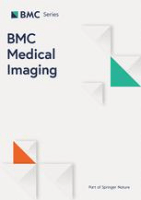
BMC MEDICAL IMAGING
Shaping Tomorrow's Imaging Solutions for Better Patient Care.BMC Medical Imaging is a premier open-access journal dedicated to advancing the field of radiology, nuclear medicine, and imaging technologies. Published by BMC in the United Kingdom, this journal serves as a vital resource for researchers, clinicians, and students, fostering a collaborative environment for sharing innovative findings and methodologies in medical imaging. With a commendable impact factor and an impressive Scopus ranking within the top 35% of its category, BMC Medical Imaging provides a platform for high-quality research to be disseminated widely and freely since its inception in 2001. The journal aims to cover a diverse array of topics, from advanced imaging techniques to their clinical applications, enhancing the understanding and effectiveness of diagnostic practices. By contributing to the body of knowledge and facilitating open access to research, BMC Medical Imaging plays a pivotal role in shaping the future of medical imaging and improving patient care.

Emergency Radiology
Transforming Emergency Medicine Through Radiology InsightsEmergency Radiology, published by SPRINGER HEIDELBERG, is a leading journal in the fields of emergency medicine and radiology, dedicated to advancing the understanding and application of diagnostic imaging in urgent medical conditions. Established in 1994, this journal has consistently contributed to the discourse around emergency diagnostics, maintaining a strong position within the academic community, as evidenced by its Q2 rankings in both Emergency Medicine and Radiology, Nuclear Medicine and Imaging categories as of 2023. With a distinguished focus on innovative research and case studies, it serves a diverse audience of researchers, clinicians, and healthcare professionals who seek to enhance their knowledge and improve patient outcomes in emergency settings. While the journal is not currently open access, it offers robust subscription options and continues to be an integral resource for those at the forefront of emergency care. With an ISSN of 1070-3004 and an E-ISSN of 1438-1435, Emergency Radiology is positioned to remain a key player in shaping the future of medical imaging through its commitment to high-quality research and evidence-based practices.
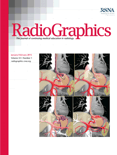
RADIOGRAPHICS
Pioneering Insights in Nuclear Medicine and ImagingRADIOGRAPHICS, published by the Radiological Society of North America (RSNA), is a premier academic journal dedicated to the field of radiology, nuclear medicine, and imaging. With an impressive impact factor and recognition in the top quartile (Q1) of both Medicine (miscellaneous) and Radiology, Nuclear Medicine and Imaging categories, RADIOGRAPHICS stands out as a leading platform for disseminating high-quality research and clinical findings. Since its inception in 1985 and projected to run until 2024, the journal has consistently provided essential insights into cutting-edge imaging techniques and advancements in radiological practices, making it invaluable for professionals, researchers, and students alike. Although it does not offer open access, the journal continues to flourish with a robust reputation, ranked 35th in its field according to Scopus, placing it within the 89th percentile of its category. With an unwavering commitment to enhancing the understanding and application of radiological sciences, RADIOGRAPHICS remains a pivotal resource for advancing knowledge and expertise within the medical community.

Radiologie
Connecting Radiological Science to Clinical ExcellenceRadiologie, published by SPRINGER HEIDELBERG, is an emerging journal dedicated to the fields of radiology, nuclear medicine, and imaging. With an ISSN of 2731-7048 and E-ISSN 2731-7056, this journal does not currently offer open access, providing a traditional yet respected platform for scholarly communication. Founded in 2022, it aims to advance the understanding of cutting-edge imaging techniques and their applications in clinical practice, contributing to improvements in diagnostic accuracy and patient care. Despite its recent establishment, Radiologie is positioned within the Q4 quartile category, reflecting its developing presence in the academic landscape, with a current Scopus rank of #231 out of 333 in its category. The journal serves as a vital resource for researchers, professionals, and students seeking to stay abreast of the latest developments in radiological science, imaging technology, and their clinical implications, ensuring ongoing engagement and advancement in this critical area of healthcare.